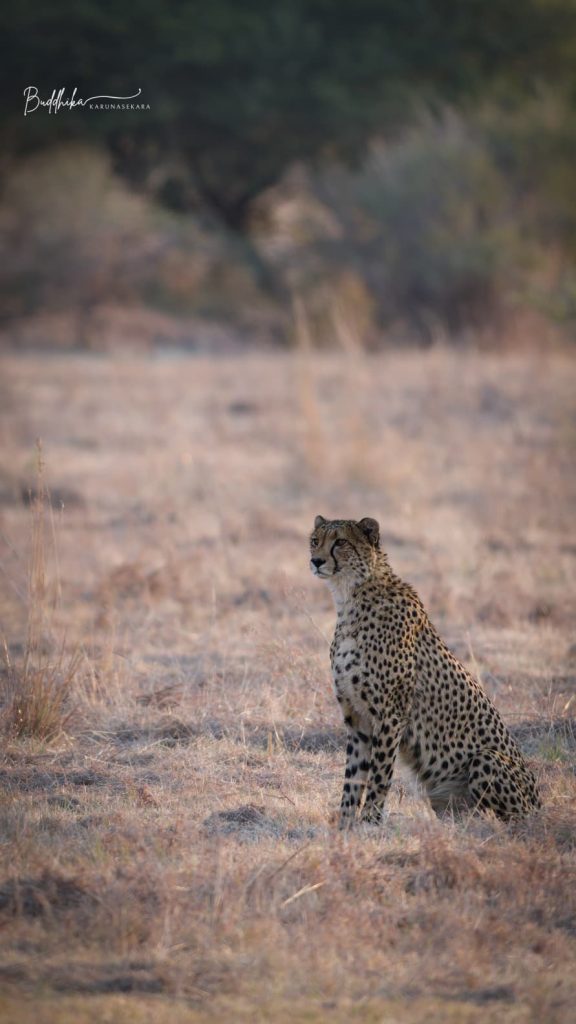
Swift and sleek, the cheetah is the fastest land animal on earth, capable of bursts that reach astonishing speeds across the open plains. Its slender body, spotted coat, and tear-like facial markings have made it one of the most admired hunters in Africa. Unlike lions that rely on pride strength or leopards that depend on stealth, the cheetah survives by speed, striking with precision before retreating to avoid confrontation. Its life on the savannah has inspired both respect and vulnerability, and it holds a distinct place in folklore across cultures.
In African traditions, the cheetah often symbolises agility and alertness. Among the San people of southern Africa, stories tell of how the cheetah gained its speed through the blessing of a higher power, chosen to be the swiftest so that balance could be maintained among animals. Other tales explain its dark tear marks as the result of grief, describing a mother cheetah who cried for her lost cubs until the tears stained her face. These markings are remembered as signs of endurance, embodying sorrow turned into strength.
Zulu folklore holds that the cheetah represents quick thinking and adaptability. Its speed is not only physical but also mental, offering lessons about making decisions swiftly and surviving through wits. Among the Tswana people of Botswana, the cheetah appears as a teacher of persistence, reminding hunters that patience and timing are as vital as speed. Such stories turn the animal into a model of strategy, rather than simply raw power.
Beyond Africa, the cheetah has also captured imaginations. Ancient Egyptians kept cheetahs as symbols of royalty and grace, often depicted alongside pharaohs in hunting scenes. Nobles trained them for coursing, believing their elegance and obedience marked them as gifts from the gods. In India, Mughal emperors also prized cheetahs, known as “hunting leopards”, and employed them in royal hunts. Folklore from these traditions emphasises the cheetah’s association with nobility, precision, and a bond between humans and animals.
Modern conservation narratives echo these earlier values. Communities in Namibia and Kenya have developed cultural practices that protect cheetahs, with local stories stressing that the survival of the swift animal ensures balance in the ecosystem. Children are often told tales of the cheetah as a guardian of grasslands, its watchful eyes ensuring harmony among herds and predators alike. Conservation groups build on these traditional stories, presenting the cheetah not only as a species in need of protection but also as a symbol of fragile speed, reminding people of what can be lost in an instant.
Folklore also cautions against arrogance. In some East African tales, the cheetah is outwitted by slower animals such as the tortoise, reinforcing the lesson that speed alone cannot guarantee success. These stories remind listeners that true wisdom comes from balance, where patience and humility are as important as quickness.
Today, the cheetah’s fate is precarious, with habitat loss, conflict with farmers, and dwindling prey threatening its survival. Yet in folklore and story, it continues to run. Around firesides and classrooms, tales of the cheetah’s tears and speed are told, weaving lessons of resilience, loss, and determination.
To see a cheetah sprint across the savannah is to witness a living legend. Its body is a poem of motion, its face marked with history, its presence alive in the stories of past and present. The cheetah is not only a hunter but a reminder that beauty and fragility often move together, swift as the wind yet lasting in memory.
